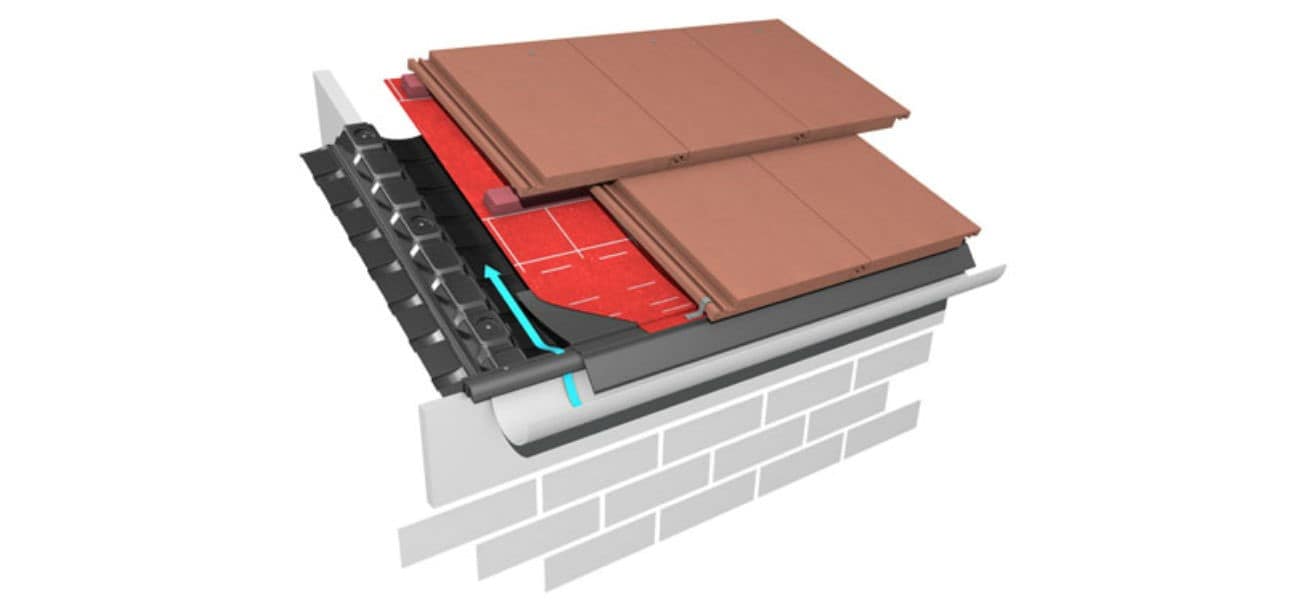Air leakage and ventilation considerations for a pitched roof blog

When specifying a pitched roof construction, controlling air leakage and ensuring adequate ventilation is an important part of providing occupants with a healthy building. It’s now widely recognised that a complete roof system approach to pitched roof design gives better results, rather than relying on an unproven combination of separate products.
As well as the roofing system components that contribute to air leakage and ventilation performance, this post also gives pointers on other areas of roof design that contribute to effective control of air and vapour movement, and which should be kept in mind when looking at the types of roofing systems available.
How is air leakage controlled in a pitched roof?
Modern construction techniques aim to minimise air leakage from a building. The uncontrolled loss of heated air through the building fabric, replaced with cold air that must be warmed to a comfortable internal temperature, places greater demand on the heating system and increases energy use and fuel bills.
Warm air also holds moisture vapour generated by the building use and building occupants. Stale, humid air is unhealthy and needs to be removed from the building, to be replaced with fresh air for people to breathe. The controlled ventilation of stale air is a general building design issue.
Since warm air naturally rises, dealing with moisture-laden air in a pitched roof is particularly critical. If too much of that air comes into contact with the cold surfaces in the roof then it can no longer hold the same quantity of moisture vapour and the excess is deposited as condensation. Over extended periods of time, condensation can cause visual and even structural defects in the roof.
Guidance on the control of condensation in buildings is given in BS 5250. When addressing the movement of water vapour into a cold roof space, BS 5250 refers to a “well-sealed ceiling”. A separate British Standard, BS 9250, demonstrates how air leakage through a ceiling can be minimised through detailing at junctions, and penetrations like loft hatches and light fittings, to meet the definition of a well-sealed ceiling.
Although not part of a roofing system such as that supplied by Marley, ceiling design and air leakage rates are the starting point for making sure a pitched roof system is able to perform as expected.
What is the role of ventilation in a pitched roof?
While a relatively well-sealed ceiling should be achievable in a new-build project, the replacement of a pitched roof covering on an existing building may not allow the same opportunities. A roofing system might prove the best option for renewing the roof covering, but it may not be possible to renovate the ceiling to meet the guidance in BS 9250 and, by extension, BS 5250.
Pitched roof ventilation is therefore designed to remove excess moisture vapour that is not intercepted by the ceiling design, including any vapour control layer. Again, BS 5250 describes the provision that should be achieved. Theoretically, eaves to eaves ventilation can be effective, but it’s often better to supplement it with high level ridge ventilation. For example, a building surrounded by other buildings will see a reduced rate of external air movement, which draws less air through the roof ventilation.
Getting the right level of ventilation, accounting for the airtightness level achieved in the roof, and the available air movement outside the building, is a balancing act. There is no ‘one size fits all’ approach. Pitched roof ventilation works in combination with the roof underlay, which may be specified to allow the passage of moisture vapour alone, air and moisture vapour together, or neither in some situations.
Sourcing roof ventilation and an underlay from separate companies can result in confusing or conflicting advice as to whether the chosen products are compatible. Neither company will want to take responsibility for what the other product does or does not do. This is where the benefit of working with a roofing company who provides and understands pitched roofing systems comes in.
Marley are the only UK manufacturer to produce all of their own pitched roof components and, crucially, subject them to testing in all possible combinations. This gives us the technical knowledge to recommend the right combination of ventilation provision and underlay specification for the chosen tile finish, and project specifics like the building location.
To find out more about Marley pitched roofing systems, contact us to discuss your project. Alternatively, find your nearest roofing merchant using our handy stockist finder.
Disclaimer - The information shared in this blog is correct at the time of publication. Guidance, standards, and best practices may change over time, so if you’d like further clarification or the latest updates, please get in touch with the Marley Technical Advisory Team, who will be happy to help.
Category: Environmental Roofing